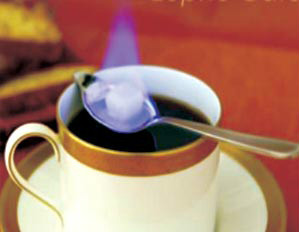Introduction of Coffee Flavor description treatment in Renas Manor in El Salvador
Coffee production in El Salvador. In its heyday, it was once the fourth largest coffee producer in the world, but decades of civil war almost dragged down the coffee industry. fortunately, the war has stopped in recent years, and the coffee industry has come back to life. The only benefit that the civil war brought to the Salvadoran country was that the farmers' fields were barren and failed to catch up with the most popular Katimo exposure train in the past two decades, thus preserving the ancient varieties of bourbon and Tibica, that is to say, El Salvador still uses the most traditional shade planting, which is of positive significance to the aroma of coffee. In 2005, the Salvadoran mixed-race Pacamara boasted in coe, which confused many international cup testers and did not know how to score it. It was never expected that this hybrid bean not only broke the mellow boundary of coffee, but also expanded the visibility of Salvadoran coffee.
Coffee fields are endless, and most of them are harvested by machinery, which is in line with economic benefits. When 75% of the coffee fruit in the coffee garden turns red, mechanical harvesting is started, followed by the same pre-washing operation, which is moved into the sink to remove floating beans, sift out the sunken beans, and then use a large pulp screening machine to dig out the pulp and remove the pods covered with pectin. The next stage is separate from the washing method: the sticky pods do not need to be moved into the tank to ferment, but to the outdoor bean drying farm. Because of the dry climate in Brazil, the sticky pectin on the pods will harden in about a day or so. Then use a large number of manpower to turn up and down, so that the pods dry evenly inside and outside, so as not to return to moisture and stink. For about two to three days, with the help of the natural forces of sunlight and dry climate, the pods can achieve a certain degree of dehydration. Then further dry with a dryer, the water content is reduced to 10.5%, and the pods are stored in a special container for about 10 days to further mature, in order to stabilize the quality, remove the sheepskin (pods) before export, remove the coffee beans, and pack them in grades.
[country]: El Salvador
[manor]: Himalayan Manor
[producing area]: Santa Ana
[altitude]: 1580 to 1720 m
[treatment]: half-sun
[variety]: red bourbon, Tibika
[processing plant]: El Divisadero
[flavor]: plum, brown sugar, red wine acidity

Important Notice :
前街咖啡 FrontStreet Coffee has moved to new addredd:
FrontStreet Coffee Address: 315,Donghua East Road,GuangZhou
Tel:020 38364473
- Prev

Description of Coffee Flavor in Santa Barara Manor, Honduras; introduction to the taste characteristics of varieties of grinding degree
Although there are no distinct characteristics of Honduran coffee, its biggest feature is its rich and balanced taste as a whole. In detail, it has a medium or shallow acidity, which is obvious but not strong. Sometimes with slightly floral or fruity aromas (generally speaking, beans from different producing areas and different elevations have different flavors) slightly bitter and obviously sweet.
- Next

Introduction to the description of the Flavor of Coffee varieties with the characteristics of Grinding degree in Chilmel Manor, Rwanda
People revolved around the computers in the new telecom center in late 2004, when the London simultaneous Brewery (Meantime Brewery) began to offer coffee beer made from coffee beans produced by Malaba. The drink is identified as an alcoholic chilled cappuccino or digestif. The chief brewer tasted coffee from all over the world and decided to add trace amounts to Malaba coffee.
Related
- Does Rose Summer choose Blue, Green or Red? Detailed explanation of Rose Summer Coffee plots and Classification in Panamanian Jade Manor
- What is the difference between the origin, producing area, processing plant, cooperative and manor of coffee beans?
- How fine does the espresso powder fit? how to grind the espresso?
- Sca coffee roasting degree color card coffee roasting degree 8 roasting color values what do you mean?
- The practice of lattes: how to make lattes at home
- Introduction to Indonesian Fine Coffee beans-- Java Coffee producing area of Indonesian Arabica Coffee
- How much will the flavor of light and medium roasted rose summer be expressed? What baking level is rose summer suitable for?
- Introduction to the characteristics of washing, sun-drying or wet-planing coffee commonly used in Mantenin, Indonesia
- Price characteristics of Arabica Coffee Bean Starbucks introduction to Manning Coffee Bean Taste producing area Variety Manor
- What is the authentic Yega flavor? What are the flavor characteristics of the really excellent Yejasuffi coffee beans?

